
What Is Reishi Mushroom?
Out of nowhere, you keep hearing people talk about all these mushrooms with strange names and incredible effects. Are they psychedelic, you ask? Where do they come from? What do they do? Rest assured, here at Zamnesia we've got all the answers. Today, we're looking into the reishi mushroom so you can get the lowdown on this ancient fungus.
In Asia, the reishi mushroom (Ganoderma lucidum) has been used in traditional holistic practice for thousands of years. But, as with much ancient knowledge, it has taken a long time to become common knowledge, at least in the West.
However, these days, interest in the reishi mushroom (and fungi more generally) is spiking, and shows no sign of slowing down. Moreover, in spite of the controversy surrounding these organisms, many people now take them as part of a holistic diet, and swear by them as beneficial.
Below, we’ll go into a little history on the reishi mushroom, explore the various types, look into the compounds it contains, and what these compounds may do in the body. Then, we’ll explore the different forms reishi mushroom can take (raw or extract) and how they can be ingested, ultimately helping you choose the best reishi mushroom for your needs!
What Is Reishi Mushroom (Ganoderma lucidum)?
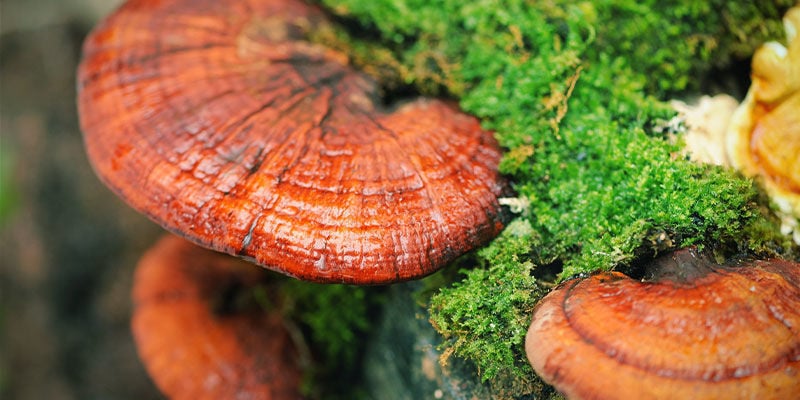
The reishi mushroom, or “lingzhi” in Chinese, is a polypore “bracket” fungus that belongs to the Ganoderma genus. It is kidney-shaped and darkens as it matures. Unusually, it does not have gills like most mushrooms; rather, it releases its spores through small pores found on the underside of the cap.
In the wild, Ganoderma lucidum is a rare fungus. It is found growing at the base of deciduous trees, and has a particular preference for maple. Here, it is only found on two or three out of every 10,000 trees. Therefore, reishi mushroom produced for commercial purposes tends to be grown on hardwood logs, sawdust, or wood chips.
Lingzhi translates into something like “the mushroom of immortality”. Records of lingzhi being used in Chinese holistic practice date back at least 2,000 years. Exactly which mushroom lingzhi refers to is unknown, as there are between 7 and 10 that could have been used interchangeably. It is thought that the red, and most common, strain is the most likely candidate, though it could be all.
What Does Reishi Mushroom Look Like?
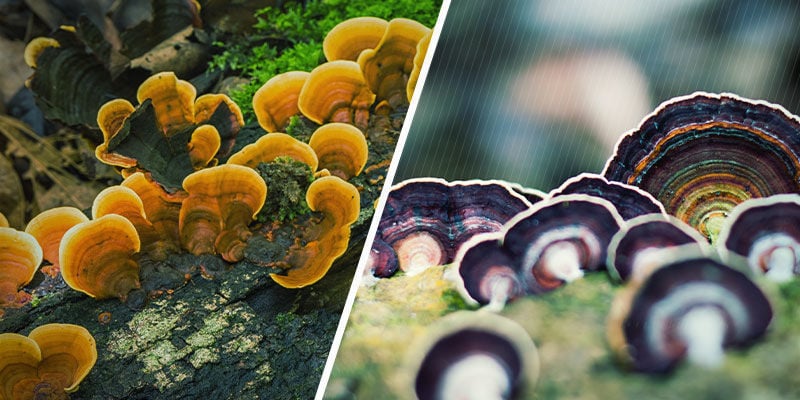
There are a few different strains of reishi mushroom, with the most common being red. However, there are yellow, purple, and black strains too. Though each of these strains is similar, there are differences between them as well. The most relevant are the concentrations of certain phytochemicals, particularly triterpenes, which are thought to be responsible for reishi’s potential benefits.
What Does Reishi Mushroom Taste Like?
Raw or dried, reishi mushrooms have a bitter taste. Therefore, it is traditionally brewed into a tea. These days, it is also possible to source reishi in capsule or tincture form. The red variety tends to be the most bitter.
Where Do Reishi Mushrooms Grow?
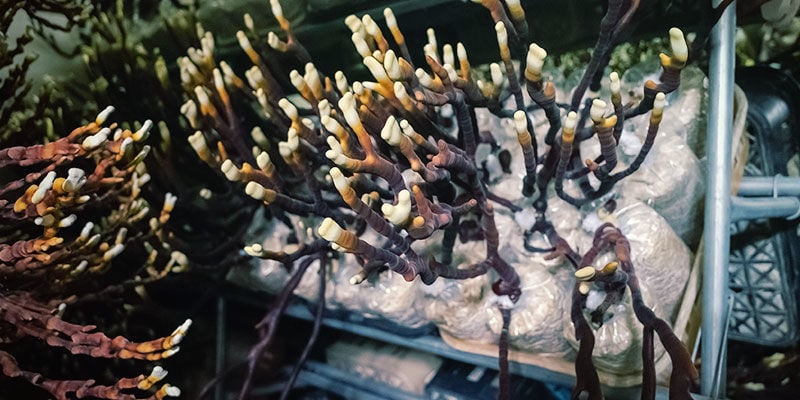
As stated, the reishi mushroom likes to grow at the base of deciduous trees. It is particularly fond of dead or dying trees.
Interestingly, where it grows can drastically alter its shape. Those that grow in the wild tend to grow large, fan-like caps with small stems. Those grown commercially, on the other hand—on sawdust or wood chips—can grow like antlers. Virtually no cap presents itself, and the mushrooms are little more than a collection of stems.
Is Reishi an Adaptogen?
The answer to this question depends on who you ask. According to EU medical bodies, there is no such thing as an adaptogen, in which case the reishi mushroom cannot be adaptogenic. Nevertheless, those who support the idea of adaptogenic compounds claim that the reishi mushroom appears to have relevant properties.
It is recommended that you do your own research on adaptogens and come to a conclusion about this controversial topic for yourself.
How Does Reishi Compare to Other Adaptogenic Mushrooms?
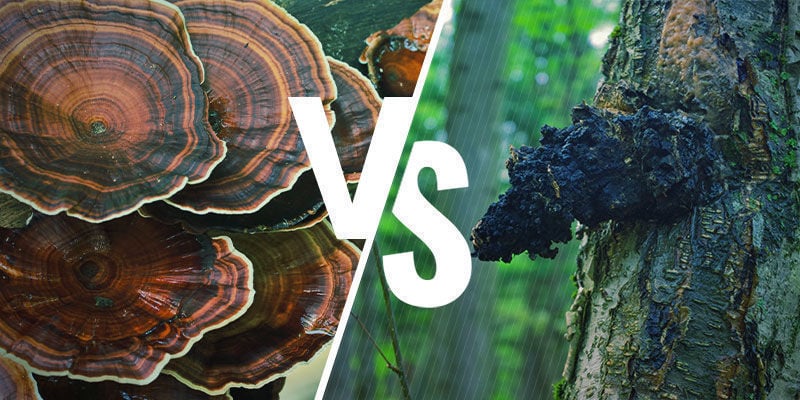
Reishi may be just one of a host of adaptogenic mushrooms. The others are also well known: chaga, Cordyceps, turkey tail, and lion’s mane. Each has a slightly different make-up and therefore performs a slightly different function. Your specific wants and desires will dictate which mushroom you think is best suited to you.
What Are the Different Forms of Reishi Mushroom?
Reishi can be bought in a variety of forms. While the effects don’t seem to change by the form in which it is taken, dose plays a significant role in the outcome. Plus, some forms can be more convenient than others, or more traditional.
When choosing which form is best for you, it will mostly come down to this distinction. Do you want a traditional method that takes a little time to prepare, or do you want a capsule you can swallow without thinking about it?
Whole Mushroom
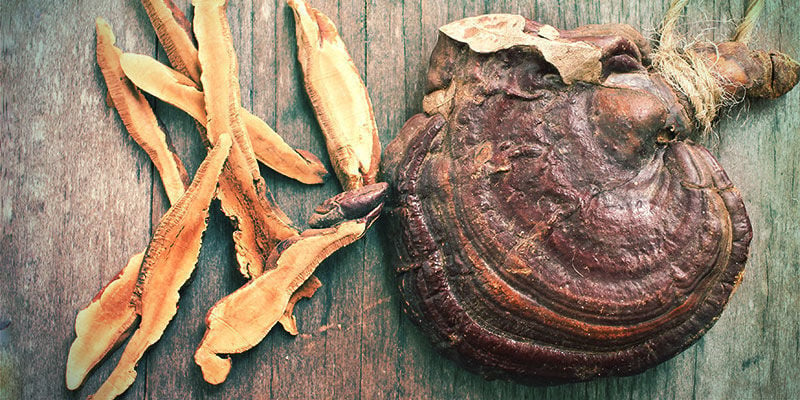
This is the rawest form that reishi can come in. It is unusual, even in traditional practice, to consume reishi raw—whether fresh or dried. However, buying it in this form offers choice, as you are then able to turn it into something else, giving you the flexibility to discover your favourite method.
Tea

Traditionally, reishi is crushed and then steeped in hot water for about two hours. Sometimes, this would then be simmered off to create a concentrate. These days, the simplest way of taking reishi mushroom tea is to buy a ready-made powder that can be added to water and drunk immediately.
Saying that, you could also buy the raw mushroom and make it yourself.
Powder

Reishi mushroom powder is a very common form. It comes either as ground-up, dried mushrooms or as an extract. Because some of reishi’s compounds are best dissolved in water, and others in solvents, reishi requires a two-part extraction. The polysaccharides are dissolved in water, and the triterpenes in alcohol. These two extractions are then combined to make the final product.
These products can then be made into tea or taken as capsules.
Tincture
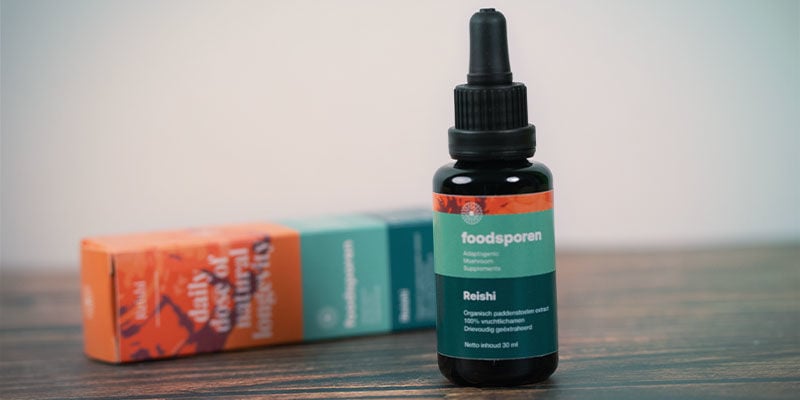
Reishi tincture is essentially a liquid extract. The same process as making a powder is used, but instead of being dehydrated into a powder, it is suspended in a solution.
Taking reishi via mushroom tinctures is a very easy ingestion method. It can be added to food, drink, or dropped directly onto/under your tongue.
Capsules
Essentially, Reishi capsules are the same as Reishi powder, except the doses are predetermined. Of all the different methods, capsules probably offer the easiest way to take Reishi. On the flip side, it's probably the least ceremonial too. Simply swallow it with a drink and reap the rewards. If all you're after are the compounds found in Reishi mushrooms, then this is a great option. If you want something a little more traditional and magical, then perhaps opt for a different method.
Effects and Side Effects of Reishi Mushroom
Reishi is touted to have an astonishing number of potentially beneficial effects. Due to the diverse compounds found in reishi mushrooms, they can affect various processes in the body. As mentioned earlier, some extracts may have higher concentrations of certain compounds, which means they specifically target the bodily processes linked to those chemicals.
What are the Benefits of Reishi Mushroom?

Reishi mushrooms are packed with substances that interact with the body, possibly resulting in a range of benefits. Let’s examine the compounds responsible.
-
Triterpenes
The triterpenes found in reishi mushrooms act as steroid hormones in the body.
Triterpenes, depending on their form, can affect the brain in many different ways. Some are believed to stimulate melanin production by increasing dendrite growth. In different circumstances, triterpenes may even help speed up the body's healing process through increased cell migration and other factors.
Generally, triterpenes are considered to be nature’s precursor to steroids. This means that triterpenes can play a role in maintaining homeostasis and balancing out the body's functions.
It is important to note that different triterpenes fulfil different functions. So, the exact role that reishi mushroom triterpenes play cannot be perfectly understood by having a general understanding of the benefits of triterpenes as a whole.
-
Polysaccharides
Polysaccharides are a chain of (ten or more) carbohydrates. In fungi, they tend to be found in the chitin, or cell walls. In both animals and plants, polysaccharides are used for storage and structure.
Polysaccharides are an essential part of the human diet, and we are able to source them from many types of food. Depending on where they come from, they either store energy, or, in the case of those derived from cell walls, are important components of dietary fibre.
Due to the roles played by different types of polysaccharides, sourcing them from a diverse range of foods offers the best chance of achieving a balanced, holistic diet.
Does Reishi Mushroom Have Side Effects?
Reishi mushrooms do not appear to have many side effects; however, there is some anecdotal evidence that prolonged reishi usage may cause:
- Upset stomach
- Nosebleeds
- Dry mouth
- Lightheadedness
Depending on the source of information, reishi side effects range from mild to non-existent. Therefore, we can assume that they are unlikely to be serious. It is nonetheless worth approaching reishi with a little caution, and always listen to your body; it knows best!
Are Reishi Mushrooms Psychedelic?
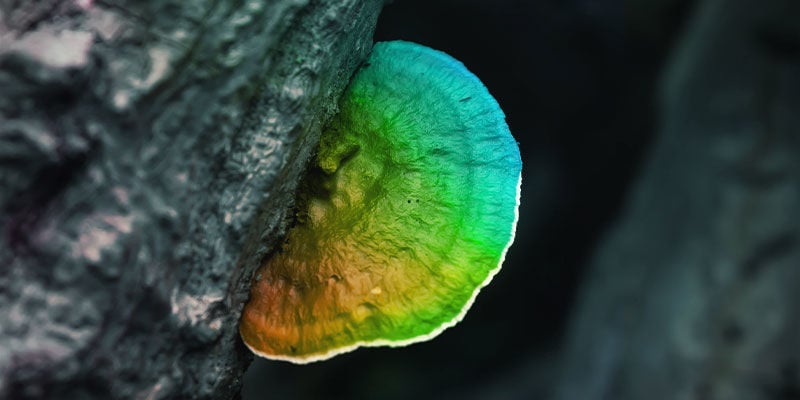
No; though some people may refer to them as “magic”, there are no psychoactive compounds present in reishi mushrooms.
Are Reishi Mushrooms Safe?
It seems, from what we know, that reishi mushrooms are safe. Having been used for thousands of years for holistic purposes, it is likely that any widespread, adverse reactions would probably be known. As it stands, most reports come back extremely positive.
Are Reishi Mushrooms Legal?
Yes. Reishi mushrooms contain no psychoactive compounds, and therefore no illegal compounds. As far as we know, they are legal everywhere.
How To Take Reishi
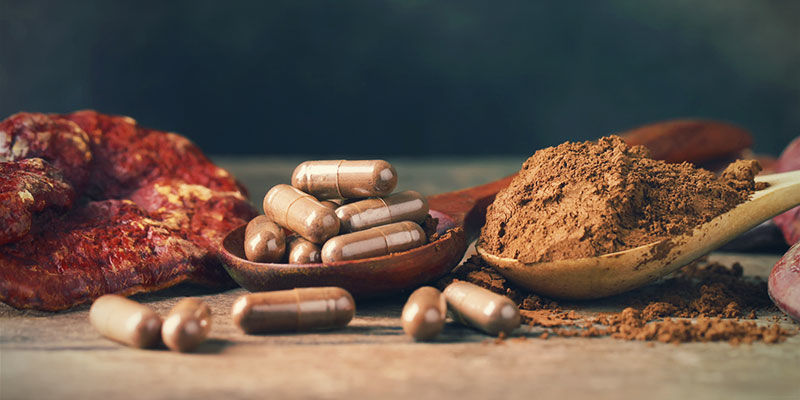
How best to take reishi really comes down to you. If you like quick, effortless supplements, then consider a capsule or tincture. This way, it can be quickly ingested and then forgotten about.
However, a little ritual often adds a host of its own benefits, so, if you have the time, it’s worth considering. Why not make a tea, or even a soup? Tea can be made from the raw mushroom or from reishi mushroom extract. Soup, on the other hand, is often made from the raw mushroom, although you could add the extract to another soup.
How Much Reishi Mushroom Should You Take?
Ultimately, this comes down to which form you are taking. If consuming the raw mushroom, between 25–100 grams is a common dose. With extracts, it tends to be about 10 times less than this: so 2.5–10 grams.
But make sure to check your particular reishi mushroom extract. This rule is suitable for full-spectrum extracts—those that include all of the mushroom’s compounds in proportion. However, some may only extract the triterpenes or the polysaccharides, in which case a comparable dose could be much lower.
When Is the Best Time To Take Reishi Mushroom?
There is no definitive answer to this question. Since many find it soothing, taking reishi mushroom before bed is a good idea, as it may induce a sense of restfulness. However, what’s most important is to take it regularly. So, even if the time is arbitrary, pick one and try to stick to it, as this makes forming habits much easier.
How Long Does It Take Before Reishi Mushroom Starts Working?
You wonder why it’s important to turn it into a habit? The benefits of reishi will not be felt straight away. Usually, they begin to take hold after about 10 to 14 days. After a month of continuous usage is when they are most noticeable. So it really is important to work reishi into your daily schedule if you want to experience the full benefits.
How To Store Reishi
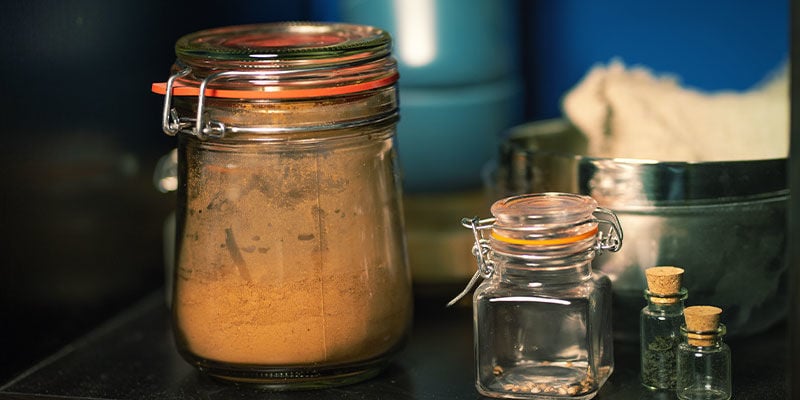
Reishi should be stored somewhere cool and dry in all forms other than fresh. Fresh reishi mushrooms should be stored in the fridge and used quickly. The other forms, such as extracts and dried powders, should be fairly easy to keep.
Can Reishi Go Bad?
Fresh reishi can go bad quickly, so it is important to store it correctly. The other forms should last indefinitely when stored properly.
Reishi Mushrooms: Are They Worth the Fuss?
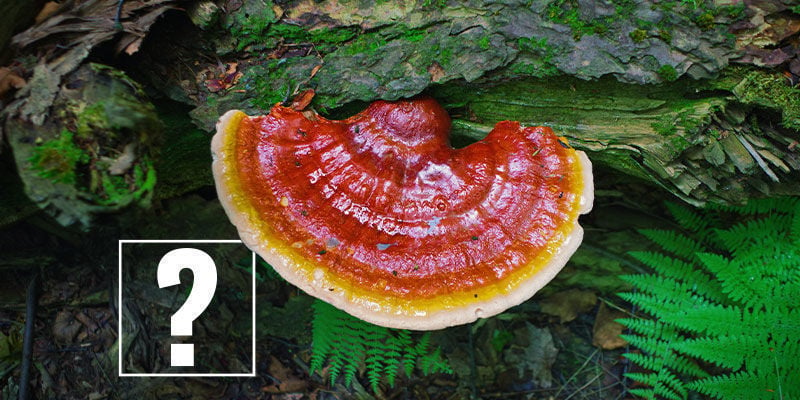
In short, yes. Though more research is needed to really uncover what reishi can do, what we know thus far appears promising. The varied and intriguing compounds found in the reishi mushroom may offer a unique suite of effects on the body. What’s more, with minimal or no side effects, there’s little to lose by giving it a go.
Mushrooms in general have had a bad rap in the Western world for a long time now, but things seem to be changing. As time goes on, we are recovering more and more ancient knowledge and love for these diverse and fascinating fungi.
Though they may be a controversial topic at the moment, throughout much, if not most of human history, all manner of fungi have been central to our cultures. In the case of reishi, Asian cultures have been reliably using it for thousands of years.
- (n.d.). Triterpenes - an overview | ScienceDirect Topics - https://www.sciencedirect.com
- Agra LC, Ferro JN, Barbosa FT, & Barreto E. (2015 Oct). Triterpenes with healing activity: A systematic review - PubMed - https://pubmed.ncbi.nlm.nih.gov
- Lovegrove A, Edwards CH, De Noni I, Patel H, El SN, Grassby T, Zielke C, Ulmius M, Nilsson L, Butterworth PJ, Ellis PR, & Shewry PR. (01/22/2017). Role of polysaccharides in food, digestion, and health - PubMed - https://pubmed.ncbi.nlm.nih.gov
-
 5 min
20 May 2025
Top 7 nootropics to boost mental performance
Nootropics occur in nature and can also be synthesised in labs. But with so many options, finding the right one isn't easy. Discover our 7 top picks to support memory and focus.
5 min
20 May 2025
Top 7 nootropics to boost mental performance
Nootropics occur in nature and can also be synthesised in labs. But with so many options, finding the right one isn't easy. Discover our 7 top picks to support memory and focus.
-
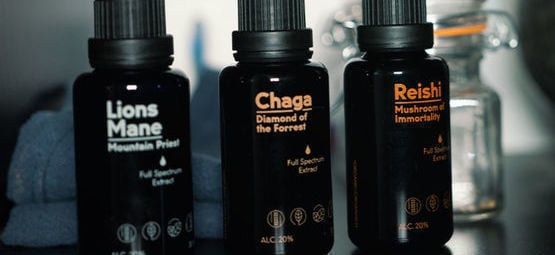 9 min
14 April 2022
Information About Mushroom Tinctures
Looking to discover the potential benefits that mushroom tinctures have to offer? Thinking of making a purchase, but a little unsure of where to start? You're certainly not alone; mushroom...
9 min
14 April 2022
Information About Mushroom Tinctures
Looking to discover the potential benefits that mushroom tinctures have to offer? Thinking of making a purchase, but a little unsure of where to start? You're certainly not alone; mushroom...
-
 6 min
2 July 2021
What Is Chaga Mushroom?
Chaga mushroom has long played a central role in traditional and natural holistic practices. But what effects does it have, how is it prepared, and is it safe? Keep reading to find out.
6 min
2 July 2021
What Is Chaga Mushroom?
Chaga mushroom has long played a central role in traditional and natural holistic practices. But what effects does it have, how is it prepared, and is it safe? Keep reading to find out.
-
 4 min
24 November 2017
How To Identify Different Types Of Magic Mushrooms
Looking for help identifying your favourite magic mushrooms? In this article, we take a look at the most common types of shrooms that you can encounter.
4 min
24 November 2017
How To Identify Different Types Of Magic Mushrooms
Looking for help identifying your favourite magic mushrooms? In this article, we take a look at the most common types of shrooms that you can encounter.









 United States
United States













